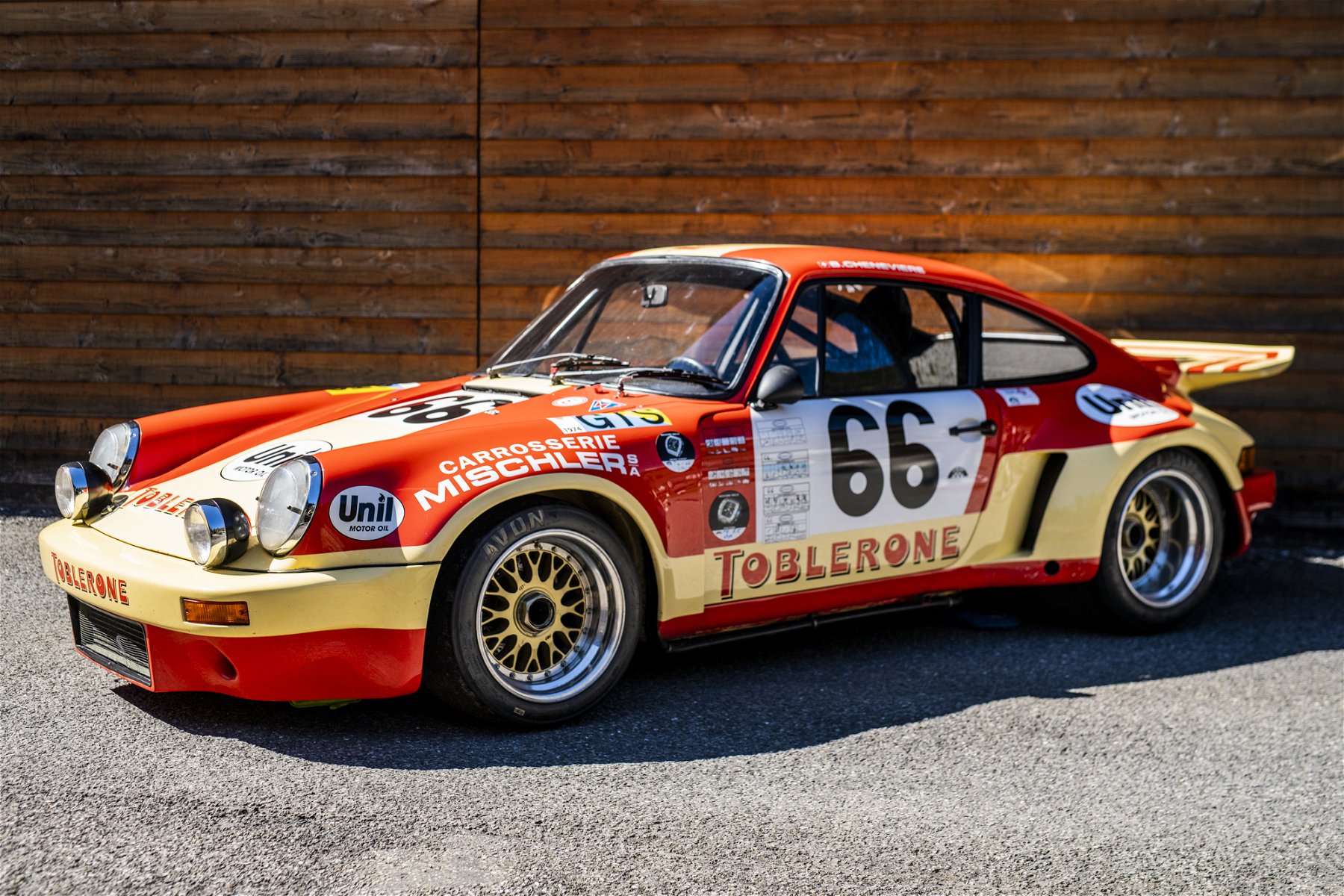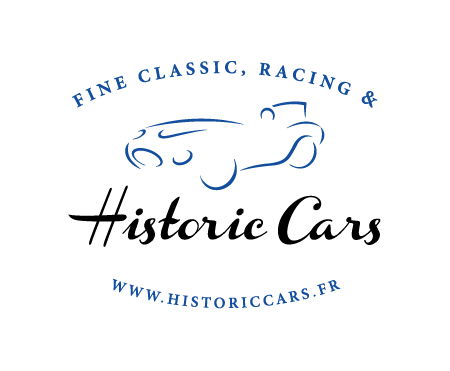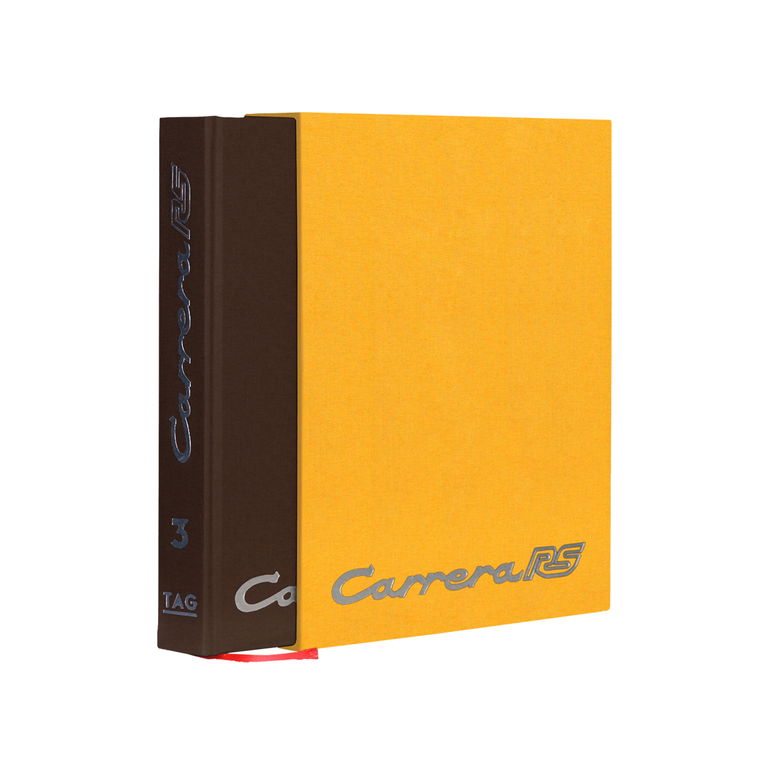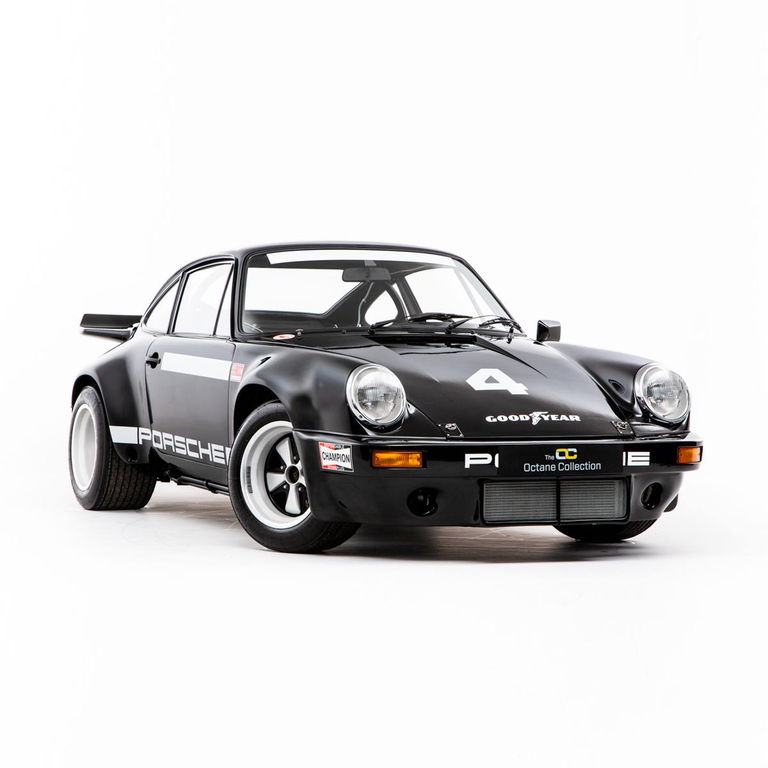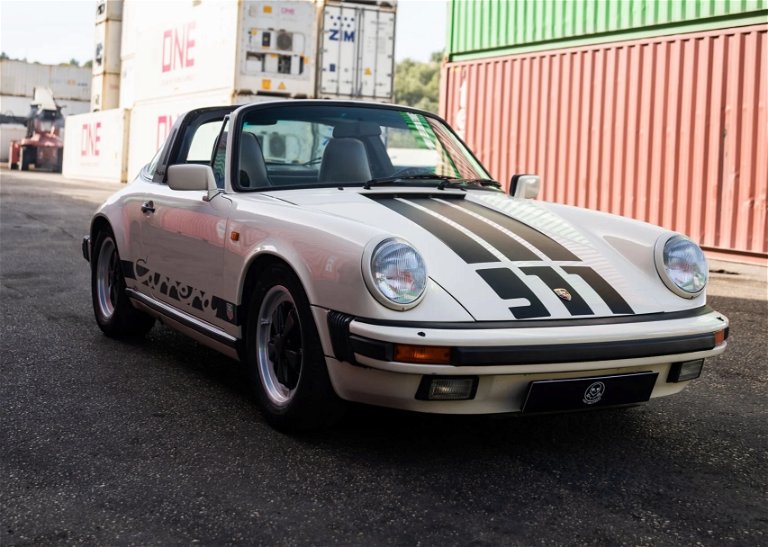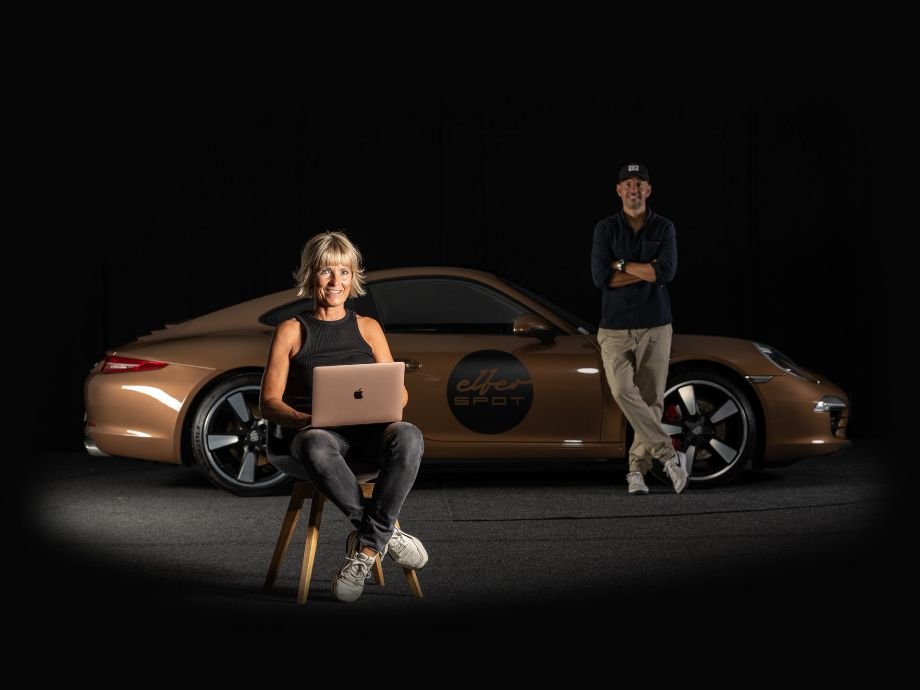Bernard Chenevière was one of the most promising Swiss drivers of the time. He made his mark in hill-climbing at the end of the 1960s and, from 1970 onwards, he competed full-time in the World Sports Car Championship. In the Porsche Club Romand in French-speaking Switzerland, he raced with drivers such as Claude Haldi, with the prestigious racing workshop of Guido Haberthur in Lausanne. The highlight of each season was of course the 24 hours of Le Mans. In 1973, Chenevière joined Escuderia Montjuich driving a Porsche 908/3. The team finished the race in fifth place overall, beating great drivers such as Vic Elford and Jürgen Barth. Spectators will remember this car because of its livery, which featured the world-famous logo of the Swiss chocolate brand Toblerone.
At Porsche, the era of prototypes is coming to an end. Instead, the focus shifted to the development of new race cars based on the Porsche 911. They would dominate the Group 4 class for years and even beat the gargantuan Ferrari and Matra prototypes at Le Mans, Daytona and the Targa Florio. In 1974, the Porsche 911 Carrera RSR 3.0L is the ultimate racing machine that can be bought privately in Zuffenhausen. It replaced the previous year’s 2.8L RSR and the 50 or so cars produced were sold out immediately.
Garage Haberthur places an order for two RSR 3L:
– 911 460 9058 is initially promised to Claude Haldi.
– 911 460 9052 was intended for Bernard Chenevière.
Manufactured in March 1974: “9058” is the first RSR delivered to Garage Haberthur.
It is finally Bernard Chenevière who will acquire it thanks to the financial support of his sponsor Toblerone. To finance his season, Chenevière called on Interfood in Lausanne and obtained a contract of 100,000 Swiss francs with Toblerone for the entire season. The Porsche was then covered with the famous logos and painted in the brand’s colors, red and cream.
Claude Haldi, in financial difficulty, had to wait to finally acquire “9052” some time later, once his budget was complete.
Our 911 3,0L RSR ” 9058 ” will be presented at the 24H of Le Mans tests and at the 4H of Le Mans race in March 1974 under the N°38 and driven by Chenevière/Zbinden in its yellow livery and with Toblerone logos
911 460 9058
After a brief appearance in the paint shop at St-Sulpice, the Toblerone was ready for its first race at Monza, now covered with the famous logos and painted in the brand’s colours, red and cream, in April 1974, and then again at Zeltweg.
Our two RSRs will be found at the start of Le Mans in 1974:
– “9052” with the N°58 and driven by Haldi/Fernandez/Seguin – 9058″ under N°66 and driven by Chenevière/Zbinden/Dubois
On June 15, 1974, the starting flag of the 24 Hours of Le Mans is waved under dark clouds. It was the fifth round of the championship and Chenevière and his co-drivers Peter Zbinden and Michel Dubois started their red and beige RSR from 32nd place. While the Matras dominated the prototype category, Ferrari and Porsche competed in the Group 4 category. After 24 hours and 4,261 km, the Porsche Club Romand has secured first place in its class, third in the GT category and seventh place overall. The only Porsche ahead of them in the standings was the Martini Racing Turbo RSR, driven by Gijs van Lennep and Herbert Müller, which finished second overall. The Toblerone Porsche, completed the Circuit de la Sarthe 313 times at an average speed of 177.539 km/h.
Le Mans was a great success, but the season was far from over for the Swiss team. Just two weeks later, Chenevière took part in the Österreichring, Hockenheim and even the Freiburg hill climb. Further successes came at the Nürburgring, Brands Hatch, Monza and the Norisring, but again and again it was the optimized RSRs of Gelo Racing and Kremer that made their way to the top. At the end of the season, Chenevière decided to part with his race car. In February 1975, he sold the RSR to the young Swiss driver William Vollery for 70,000 Swiss francs. Vollery had the car painted yellow and black and used it in various races throughout Europe over the next two years. The car will once again start at Le Mans, but instead of the beautiful Toblerone sponsorship, the windshield will simply bear the sticker “Sponsor help me”, a goal that will not be reached.
In 1977, the Porsche 911 Carrera RSR was overtaken. The new reference in Group 4 is the Porsche 934 with its turbocharged engine. Guido Haberthur, bought the “9058” that he had delivered in 74 and decided to transform this old RSR into a more modern car with a turbo engine. “9058” was then entered at Le Mans for the third time, but as a 934 and with the white and blue sponsorship of Danone on the modified bodywork. After 10 hours, the drivers Eugenio Baturone, Rafael Tarradas and Juan Fernandez Garcia had to admit defeat. Meanwhile, Swiss driver and rally champion André Savary had his eye on the Porsche. For our RSR, which was once comfortable on European circuits, a second career as a rally car was about to begin. André Savary left the bodywork of the 934 but replaced the turbocharged engine with a naturally aspirated one and, curiously, began to put his initials on the engine and gearbox. This unusual anecdote has a simple explanation. Guido Haberthur, who continues to look after the Porsche, is known for swapping parts between his cars at will. And the new owner wanted to keep track of things. Even today, if you take a closer look at this RSR, you can see the initials “A.S.” several times.
In 1977 1978 and 1979, Savary took part in most of the rounds of the Swiss Rally Championship with the RSR, but not always with the expected results. “André Savary showed in the first special stage, from Sonzier to Les Avants above Montreaux, who was the man to beat,” reads the magazine Motorsport Aktuell about the Rallye des Neiges. “But Savary’s lead only lasted until the third stage. A passage through a lovingly tended farmyard cost him about a minute, after which the engine gave up the ghost.” In the Jura Rally, Savary went off the road… at 170 km/h.But once again, the Porsche was repaired by its owner and this time the large spoilers and wide wheel arches were removed. One could almost mistake the RSR for a 911 Turbo. And Savary was at the start of Neuchatel Criterium 6weeks after. While Claude Haldi, Bernard Chenevière’s former teammate, won the title in a Porsche turbo in 1979, André Savary became Swiss rally vice-champion in 1979 and 1980. After winning the vice-champion trophy the following year with Christian Blanc, the RSR went to its sixth owner: the 22-year-old Dutchman Christian van Dijk. He lived in Switzerland and entered the Porsche in numerous rallies, the last of which was the grueling Tour de Corse in 1983. After nine years of adventures, the old “Toblerone” Porsche was retired and ended up living a contemplative existence in the Geneva Automobile Museum.
The story of this incredible car could have ended there. But at the end of the 1990s, the Geneva industrialist Peter F. Baumberger discovered the RSR and had it restored. It will then pass into the hands of the President of the Porsche Club in France Philippe Aunay.
In 2008, it finally found its place in the collection of Stephan Meyers in Belgium. Mr. Meyers is passionate about the original history of the car and asks the German historian Ulrich E. Trispel to reconstruct its history. The two men start a real in-depth work, collecting from Bernard Chenevière precious archives of the time (original invoice, sponsoring contract, follow-up of the expenses of the 1974 season, sales contract to Vollery, old CG, notes etc…) and from the ACO the weighing sheets of the 1974 Le Mans confirming that it is indeed “9058” which participates under the N°66 with the Toblerone colors.
At the same time, he had the car prepared by Marc de Siebenthal in Switzerland and gave it back its significant colors of the Toblerone livery, in order to participate in historic races.
In 2011, this RSR was sold to its current owner, a Swiss amateur driver who continues to use it successfully in prestigious historic races throughout Europe: CER / Tour Auto / Le Mans Classic… The rich history of the “Porsche Toblerone”, one of the most remarkable racing cars in Switzerland, continues in the best sense of the word on the greatest European circuits it has never left such as Le Mans, Spa and Monza.
